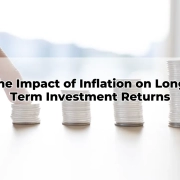How much can I put into super?
Table of Contents
ToggleSometimes, Australian workers and bosses may wonder how much money they can contribute to their superannuation (super) in Australia. However, it’s not easy to give a simple answer to this question, as the superannuation system is quite complex.
This blog post is here to help you understand how much money you can add to your superannuation account each year or throughout your life to make the most of your savings for retirement. By knowing these limits, you can make smart decisions and enjoy the advantages of being a wise investor! Keep reading to learn more!
Overview of superannuation
Superannuation in Australia is really important for people when they get older and stop working. It’s a system that helps them save money for their retirement. The government makes sure that it’s organized well and follows certain rules. When Australians retire, they can use the money they saved in their superannuation to have a regular income, which makes it easier for them to enjoy their retirement without worrying too much about money.
Superannuation is really important for our country. It helps people plan for their future and makes sure they have enough money when they retire. This is good for individuals because they can have a better life after they stop working. It also helps our government because it reduces the burden on public welfare programs. By encouraging people to save money, we can all be more prepared for retirement and have more control over our finances.
As people in Australia are getting older and living longer, a special type of savings called superannuation is becoming increasingly important in the country’s financial system. Superannuation helps secure a stable and prosperous future for future generations.
What are the super contribution caps and how do they work?
In Australia, the Super Contribution Caps are rules that help control and protect the country’s superannuation system. They set limits on how much money a person can add to their super fund in one year. These caps are important because they ensure the system stays fair and stable.
The Super Contribution Cap has two different parts: concessional contributions and non-concessional contributions. Concessional contributions are the money put into your super fund before taxes, like contributions made by your employer or money you choose to sacrifice from your salary. Non-concessional contributions are the money you put into your super fund after taxes, which means you’ve already paid taxes on that money.
The Australian Taxation Office (ATO) is responsible for keeping track of these contribution limits. They make sure that the caps, or the maximum amounts you can contribute, are adjusted every year based on the average wages growth index. This helps ensure that the contribution limits stay in line with how wages are changing over time.
By understanding the Super Contribution Caps, Australians can strategically plan their retirement savings while maximising tax benefits, ensuring they achieve a secure and comfortable future upon retirement.
Types of contributions you can make to your superannuation fund
Boosting your superannuation fund is a great way to make sure you have enough money for a stable future. There are a few simple ways to contribute more effectively.
- Salary sacrificing. A way to save money on taxes by putting some of your salary into your super fund before taxes are taken out. It’s an arrangement you make with your employer. If your employer doesn’t offer this option or if you’re self-employed, you can still get similar benefits by making contributions to your super fund on your own and claiming a tax deduction for them. It’s a smart alternative for saving money on taxes.
- If your partner has less money in their superannuation fund (a retirement savings account), it would be a good idea to think about adding money to their fund. By doing this, you can help their fund to grow over time, which means they will have more money saved for their retirement. It’s a way of supporting them and ensuring a better financial future.
- By following a well-planned strategy to contribute money to your fund at the right time and without any special tax concessions, you can save a lot of money on taxes. This will improve the overall performance of your fund.
- Be sure to watch for benefits offered by the government, such as the co-contribution scheme. This program allows you to add your own money to your savings, and the government will also contribute some money to match it.
By exploring these diverse approaches, you can take control of your financial future and ensure a comfortable retirement.

How much can I put into super in a lump sum?
Are you thinking about boosting your retirement savings by putting a large amount of money into your Australian superannuation fund all at once? If that’s the case, it’s really important to know the restrictions and rules that apply, so you don’t run into any problems or unexpected taxes.
Lump sum contributions can be made in the form of either concessional (before-tax) or non-concessional (after-tax) contributions. Concessional contributions are capped at $27,500 per financial year, whereas non-concessional contributions are limited to $110,000 per financial year or $330,000 over a three-year period, depending on your total super balance.
It’s important to pay close attention to these limits because going over them could mean you have to pay more taxes. Make sure you take advantage of this good way to grow your retirement savings, but make sure you know and follow Australia’s rules about superannuation.
How much extra should I contribute to super?
It’s smart to take charge of your money in Australia and think about how much more you can put into your retirement savings. Deciding to add a little extra to your superannuation now can make a big difference to your wealth in the long run. Keep in mind that even a small increase in your contribution today can lead to a lot more money later on, thanks to compound interest.
When deciding how much extra money to add, there are a few things to think about. Your age, how much you earn, what you want to do in the future, and how important it is for you to feel secure during retirement are all important factors to consider.
Finding the right answer for everyone is difficult, but getting help from experts and carefully thinking about your own situation can make sure you’re heading in the right direction to have a comfortable and safe retirement.
Carry-forward (catch-up) Concessional Contributions
If you put money into your superannuation account (concessional contributions) and it’s less than $27,500 for the current financial year (2022/23), you can keep the leftover amount and use it in future years. This is called ‘Catch-up Concessional Contributions.’ It’s a way to make the most of your money and let it grow over time. So, don’t miss out on this chance to make your money work harder for you!
Since 2018/19, there’s a way you can boost your superannuation savings called catch-up concessional contribution. If you haven’t used up your contribution limit in a year, you can carry over the unused amount for up to five years. But there’s a condition: before you can use this benefit, your total super balance should be less than $500,000 by the end of the previous financial year.
If you have different types of jobs or face temporary money problems, this option gives you more freedom to put money into your account with special tax advantages.
Case Study
After taking maternity leave, Charlotte is deliberating if she should make more CCs to super in 2022/23. Here’s a summary of her CC contributions and unused amounts accumulated since 2018/19:
| Financial Year | CCs made | General CC cap for year | Unused amount for financial year | Unused amount that can be carried forward |
|---|---|---|---|---|
| 2018/19 | $15,000 | $25,000 | $10,000 | $10,000 |
| 2019/20 | Nil (maternity leave) | $25,000 | $25,000 | $35,000 |
| 2020/21 | $15,000 | $25,000 | $10,000 | $45,000 |
| 2021/22¹ | $20,000 | $27,500 | $7,500 | $52,500 |
¹Every financial year, the CC cap may be adjusted for inflation.
After reviewing Charlotte’s data, she may be able to take advantage of up to $80,000 in additional contributions this year – that is an additional $52,500 on top of the yearly limit of $27,500 for 2022/23.
Assuming Charlotte meets all the necessary criteria, it is important to consider whether making a concessional contribution would be the best decision for her.
Important things to consider:
- If you want to use up your carried forward cap amounts, making salary sacrifice or personal deductible contributions may be the way to go.
- Don’t forget that until you reach certain conditions of release such as reaching your preservation age and retiring, accessing your super is not an option.
Before you put more money into your superannuation account (a retirement savings account), especially through catch-up concessional contributions (extra contributions with tax advantages), it’s a good idea to talk to a financial expert. It’s important to make sure this plan will help you in the future and if adding more money is truly the best option for you.
If you want to know more about CCs, you can visit ato.gov.au. This website has detailed information about these specific types of contributions, and it even provides examples to help you understand better!

Can I put inheritance into super?
If you’ve recently received an inheritance, you may be wondering whether you can invest this windfall into your superannuation fund. The short answer is yes, but there are some important considerations and limitations to be aware of.
When you give some of the money you inherited to your super, you’re moving your wealth to a place where you can save for retirement and get tax benefits. This can be really helpful in the long run. But remember, there are limits to how much you can contribute each year. If you go over those limits, you might have to pay extra taxes. Also, once the money is in your super, you usually can’t take it out until you’re older or meet certain conditions. So it’s important to find a balance between saving for retirement and having enough money for your current and future needs.
Hiring a financial advisor can be really helpful when you’re faced with a complicated decision. They can guide you through the process and make sure you have all the information you need to make smart choices based on your own situation.
Tips on how to maximise your super contributions
Maximising your super contributions can significantly enhance your financial stability in retirement, and with the right strategies in place, you can do so efficiently and effectively.
- Take advantage of the government co-contribution scheme. This means that if you put some of your own money into your superannuation fund after paying taxes, the government will add some extra money to it as well, up to a certain limit.
- Consider salary sacrificing. This means you can choose to put some of your earnings directly into your super before paying taxes. By doing this, you lower your taxable income and save on taxes.
- Consolidate all your super accounts into one. This makes managing your money easier and reduces the fees you have to pay. It’s also worth considering contribution splitting with your spouse as you near retirement. This means you can transfer some of your super contributions to your spouse, which can help optimize your super balance and give you more tax benefits.
Ultimately, it’s crucial to stay informed and seek professional advice tailored to your unique circumstances to unlock the true potential of your super contributions.
Tax benefits of contributing to superannuation
Superannuation is like a special savings account that Australians use to plan for their future when they stop working. It’s an important part of their financial plan. One of the main reasons it’s so important is because it comes with tax benefits. These benefits help people save a lot of money when they’re thinking about retirement or deciding where to invest their money.
- When contributing to super, concessional contributions are made before-tax, which means that they are taxed at a reduced rate of 15% instead of your marginal tax rate. This lower tax rate incentivises individuals to invest in their super fund, fostering a secure financial future.
- Non-concessional contributions made from after-tax income can also lead to tax savings as they are not subject to additional tax within the super fund.
- When it comes to withdrawing your super at retirement, you can enjoy a tax-free pension or lump sum payment, provided you meet the eligibility criteria.
Ultimately, understanding the tax benefits associated with superannuation contributions can greatly contribute to effective long-term financial strategies, enabling you to maximise your retirement income and enjoy a more comfortable future.
Benefits of having a financial advisor when investing in superannuation
Working with a qualified financial advisor when investing in superannuation is incredibly beneficial for anyone in Australia looking to maximise the potential of their investments over the long-term.
- Financial advisors are experts in the field, so they can help you identify high-yield investments that are tailored to your individual circumstances, risk profile and goals.
- Financial advisors have access to various products and advice services that might not be available to individual investors who don’t have a professional connection.
- Having an advisor also gives you the reassurance of knowing that you’re making decisions based on sound guidance from someone who takes into account historical performance data and research from investment firms.
For Australians savvy enough to choose the avenue of seeking expert advice when investing in superannuation, its benefits can be greatly rewarding.

There is a lot to consider when it comes to superannuation and the importance of making the most out of it for your retirement. Understanding your budget, contributions caps and super contribution options are all key to navigating through this area; however, seeking help from a financial adviser may assist further in helping you determine which option suits you best. Consider setting aside a portion of your income each month – whether that money goes into savings or directly into superannuation is up to you- but remember that building a secure future is worth investing in. Tax benefits are also something to consider when contributing to superannuation, as it provides even more incentive to invest in this system.
If you need any advice on how to maximise your contributions or would like further information on how superannuation works then please don’t hesitate to contact us today – we can’t wait to help you make sure your retirement is one filled with financial security and peace of mind!









